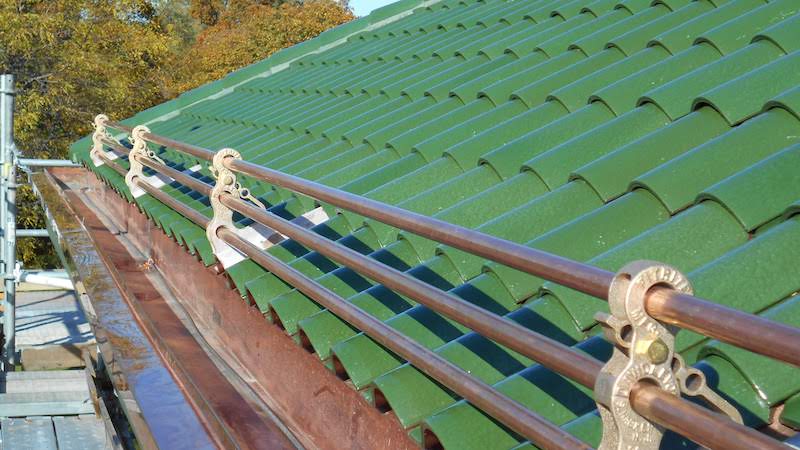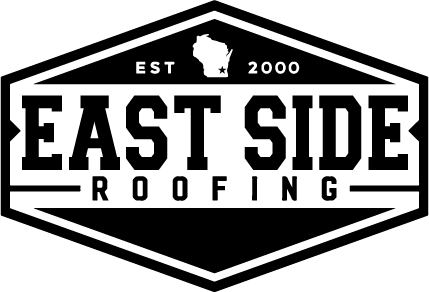
Winter’s grip can be relentless, especially if you’re a homeowner here in Wisconsin, and it’s likely you’ve dealt with the dreaded ice dam emergency. Don’t worry; we’ve got your back. In this guide, we’ll walk you through the essentials of handling ice dams and preventing them from wreaking havoc on your roof.
Understanding Ice Dams
What Are Ice Dams and How Do They Form?
Ice dams are the villains of winter, and they can be sneaky and destructive, and can cause damage that could be pretty costly to fix. They form when heat from your home escapes into the attic and warms the roof, causing the snow to melt. This melted snow flows down to the eaves, where it refreezes, creating a dam of ice. As more snow melts and refreezes, it gets trapped behind this ice dam, leading to water seepage under your roof shingles.
Recognizing the Signs of an Impending Ice Dam
Before you can tackle an ice dam emergency, you need to spot the warning signs. Look out for icicles hanging from your eaves and the telltale water stains or leaks inside your home. These are signals that an ice dam might be causing trouble on your roof.
- Safety First: Precautions When Dealing with Ice Dams – Safety should always be your top priority. Ensure you have a sturdy ladder, and never attempt to climb onto an icy roof. Use a roof rake or long-handled broom to reach the affected areas safely.
- Assessing the Severity of the Ice Dam Situation – Not all ice dams are created equal, which is why it’s important to assess the size and location of the dam. If it’s relatively small and isolated, you might be able to handle it yourself. But if it’s extensive or causing significant damage, it’s time to call in the pros.
- Temporary Measures to Minimize Immediate Damage – While awaiting professional help, you can take temporary steps to minimize damage. Clear snow from your roof eaves using a roof rake. You could also chip away at the ice dam carefully, being mindful not to damage your roof shingles or gutters.
Can Ice Melt Products Help Remove Ice Dams?
Ice melt products, such as rock salt, when used correctly, can help melt ice dams. Select the appropriate ice melt for your roof type and apply it sparingly to the affected areas. This can facilitate the gradual release of trapped water.
Professional Intervention for Emergency Situations
While some people try to tackle ice dams by themselves with a roof rake or snow removal tool, it’s best to call trained professionals to remove them. Not only are professionals experienced in removing ice dams, but they know how to create channels or grooves in the ice to allow meltwater to escape, preventing further damage in the future.
Signs of severe situations include extensive water damage, sagging ceilings, or structural concerns. In such cases, don’t hesitate to call in roofing professionals with experience in ice dam removal.
The Role of Roofing Professionals in Urgent Ice Dam Removal
When faced with an urgent ice dam situation, the expertise of roofing professionals becomes invaluable. These specialists are equipped with the knowledge, experience, and tools necessary to address ice dams swiftly and effectively. They possess a deep understanding of the risks associated with ice dam removal and employ safe techniques to prevent further damage to your roof.
Roofing professionals can accurately assess the severity of the situation, determining if immediate action is required. They can also identify any underlying issues contributing to ice dam formation, ensuring a comprehensive solution. By entrusting the removal process to these experts, homeowners can have confidence that their roofs will be safeguarded from further harm, providing peace of mind during the winter months.
Long-Term Solutions for Ice Dam Prevention
- Evaluating Roof Insulation and Ventilation – To prevent future ice dams, focus on improving your roof’s insulation and ventilation. Proper insulation helps maintain a consistent roof temperature, reducing the likelihood of snow melting and refreezing.
- Installing Effective Roofing Underlayments and Membranes – Consider the installation of ice and water shield membranes or underlayments in vulnerable areas. These act as barriers, preventing water infiltration even if an ice dam forms.
- Consideration of Heat Cable Systems for High-Risk Areas – Heat cable systems can be strategically installed in areas prone to ice dam formation, such as eaves and gutters. These systems emit heat to prevent ice buildup.
Gutter and Downspout Assessment
Maintaining clean, debris-free gutters is crucial. Clogged gutters can contribute to ice dam formation by preventing proper drainage. Consider installing gutter guards to keep leaves and debris out. This can help ensure smooth water flow, reducing the likelihood of ice dams forming in the future.
Roofing Material Considerations for Ice Dam-Prone Areas
In ice dam-prone areas, the choice of roofing materials plays a crucial role in mitigating potential damage. Opting for materials with enhanced snow-shedding properties can make a significant difference.
Copper roofing, for instance, is highly effective in discouraging snow accumulation due to its smooth surface. Its slick nature allows snow to slide off more easily, reducing the likelihood of ice dams forming in the first place.
Additionally, steeply pitched roofs are excellent choices as they naturally encourage snow to shed. They provide less surface area for snow to accumulate, minimizing the risk of ice dams.
By selecting roofing materials tailored to the specific challenges of ice-prone regions, homeowners can take a proactive step towards safeguarding their roofs from potential winter damage.
Inspecting and Sealing Vulnerable Roofing Points
You can examine roof penetrations like vents, chimneys, and skylights for potential gaps or leaks. Call in roofing professionals to seal any vulnerabilities and prevent warm air from escaping.
It’s important to ensure proper sealing around roof penetrations using appropriate materials like caulk or flashing. This minimizes the risk of warm air reaching the roof and causing snowmelt.
We Make Ice Dams a Thing of the Past
Dealing with an ice dam emergency can be stressful, but with the right knowledge and a bit of preparation, you can protect your home from further damage. Remember, safety should always come first. Whether it’s tackling the issue yourself or calling in the pros, acting swiftly can save your roof from potential disaster. And for long-term peace of mind, consider preventive measures to keep those ice dams at bay.
Here’s to a winter with a secure, snow-free roof!
Contact East Side Roofing today to get your roof ready for the Wisconsin winter.

